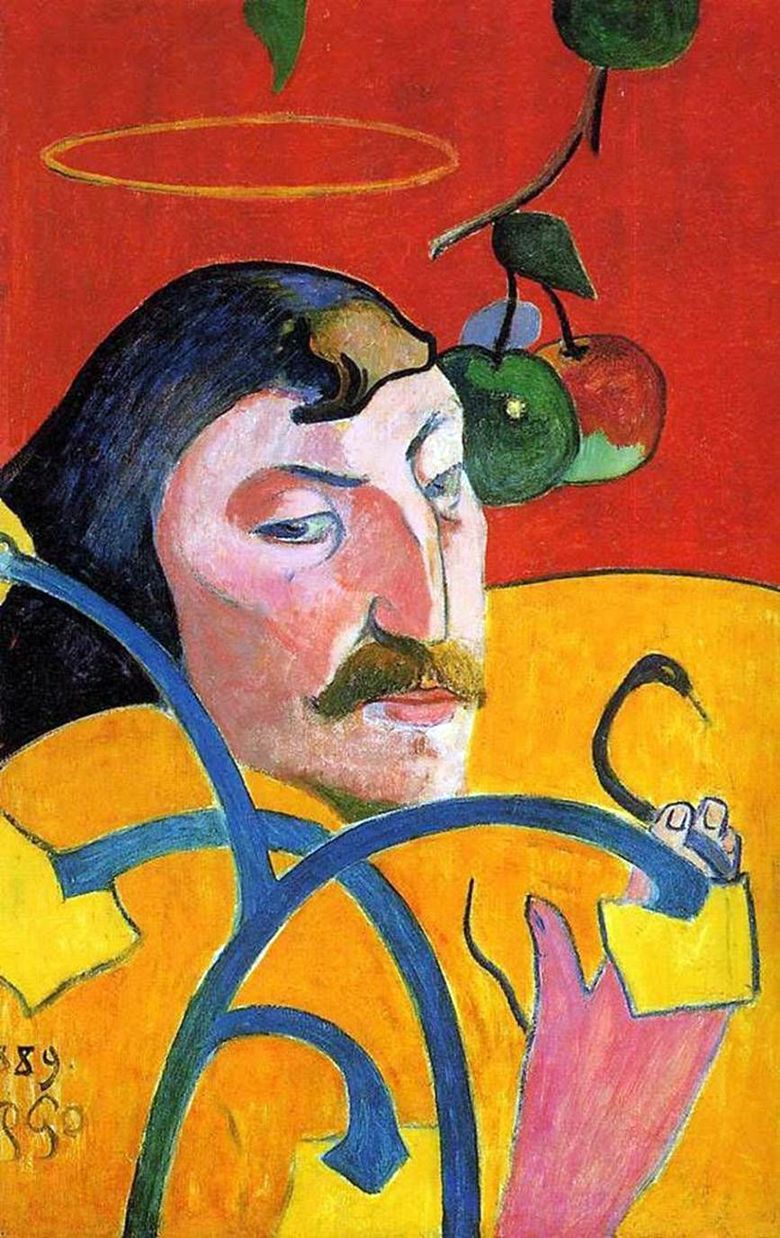
“Symbolic self-portrait with a halo” or “Self-portrait grotesque” was created by the artist in 1889 and refers to the Breton period of the artist’s work.
The history of the creation of the work is remarkable. Once an ordinary small hotel in Le Pudaldyu hosted Gauguin with his friends. The owner of the hotel, having learned that among his guests there are artists, asked to decorate their walls and furniture with a list. Gauguin chose an oak cabinet for himself, and it was on his door that he created an unusual portrait full of complex symbols.
His face with lips folded in a slightly noticeable grin and sly gaze, looking somewhere to the side, Gauguin depicted on a bright background of two color zones – red and yellow-orange.
Today, the creativity and artistic heritage of the French painter has been thoroughly studied and studied, and many works have been given curious interpretations, although it is not known whether the author really invested such symbolism in them, or whether they were allegories of a different kind.
One way or another, it is accepted that two color strips are two polar antagonistic worlds: red – real life, terrestrial; the yellow one is the radiance of the divine seal. Between them is located Gauguin. The snake and apples are a biblical symbol of temptation, and the halo above the artist’s head undoubtedly attests to a high destiny.
The author as if with himself philosophizes about the contradictions with which a person encounters, being at the crossroads of white and black, heavenly and earthly.
The whole picture is devoid of depth, we see a planar image. Bright colors indicate a gravitation towards decorativeness, which will find an outlet in his Tahitian paintings.
 Self-Portrait with the Yellow Christ by Paul Gauguin
Self-Portrait with the Yellow Christ by Paul Gauguin Autoportrait avec un halo (auto-grotesque) – Paul Gauguin
Autoportrait avec un halo (auto-grotesque) – Paul Gauguin Self-portrait “Les Miserables” (rejected) by Paul Gauguin
Self-portrait “Les Miserables” (rejected) by Paul Gauguin Self-Portrait in a Hat by Paul Gauguin
Self-Portrait in a Hat by Paul Gauguin Still Life with Sunflowers on the Chair by Paul Gauguin
Still Life with Sunflowers on the Chair by Paul Gauguin Portrait of Madame Gauguin in an Evening Dress by Paul Gauguin
Portrait of Madame Gauguin in an Evening Dress by Paul Gauguin What’s new? (Two Tahitians) by Paul Gauguin
What’s new? (Two Tahitians) by Paul Gauguin Wooden sculpture by Paul Gauguin
Wooden sculpture by Paul Gauguin